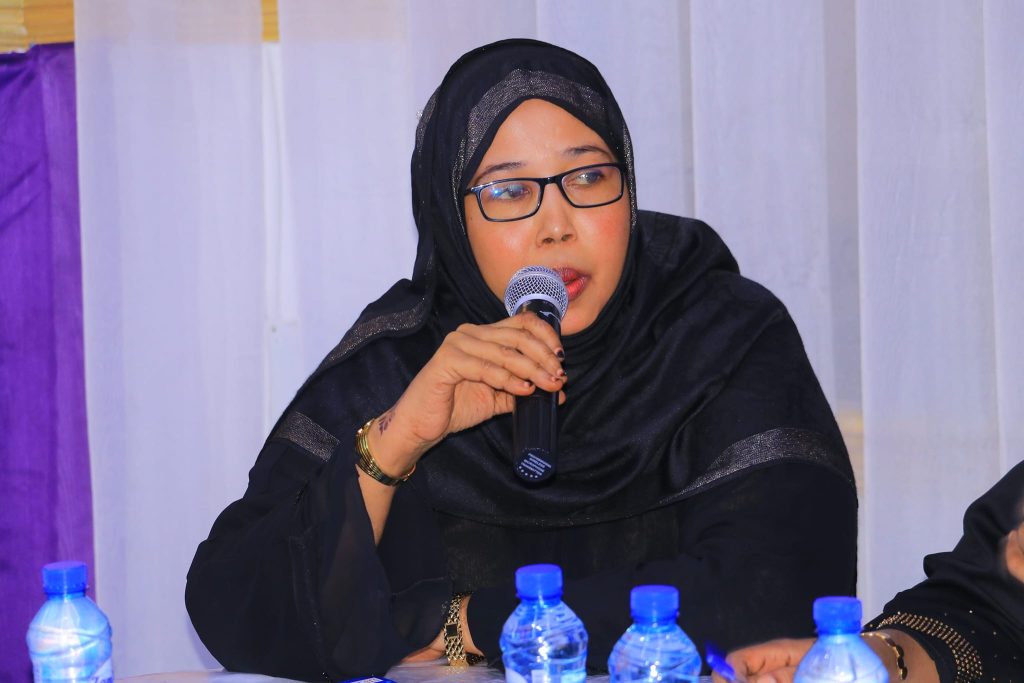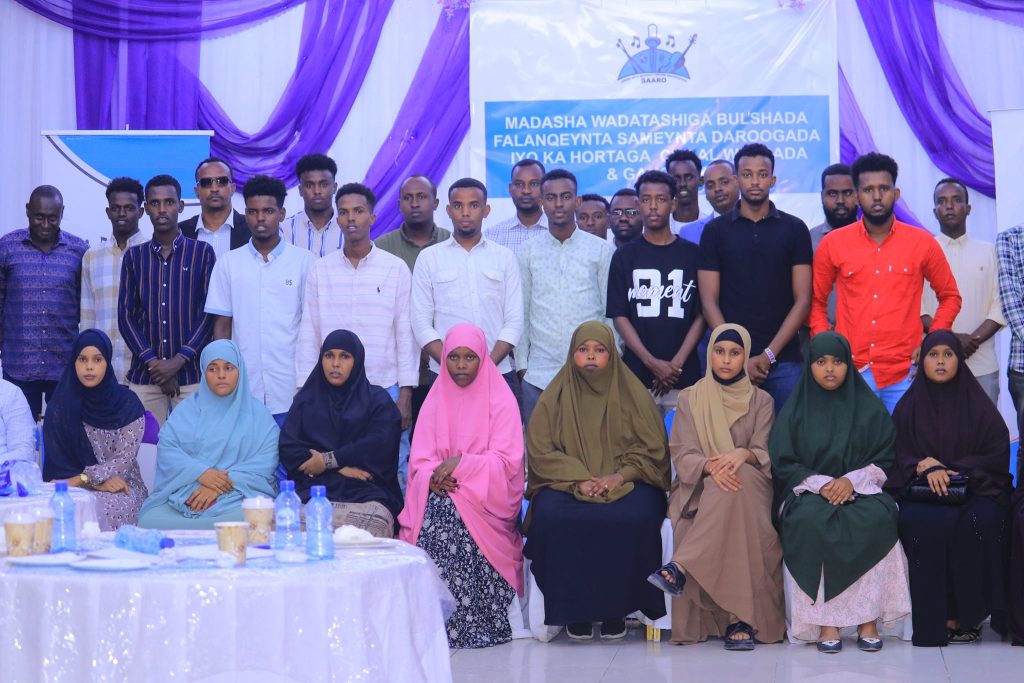Executive Summary of Ground Research Findings on Technology-Facilitated Gender-Based Violence in Somalia
Date: 26 October 2025
- Executive Summary
This document summarizes the definitive findings of a six-month empirical research study conducted by the Somali Arts, Advocacy and Reform Organization (SAARO) on the phenomenon of Technology-Facilitated Gender-Based Violence (TF-GBV) in Somalia. The research establishes that digital platforms are being systematically weaponized to harass, threaten, extort, and silence Somali women and girls, directly undermining their human rights and participation in public life. The findings reveal an acute protection gap, characterized by a lack of legal recourse, institutional capacity, and public awareness, which perpetuates a crisis of impunity for perpetrators. This summary presents the key evidence, analysis, and imperative for urgent, coordinated action by national and international stakeholders.
- Research Methodology
SAARO employed a mixed-methods, ground-truth methodology to ensure comprehensive data collection and validation. The research was conducted between April and September 2025 across key urban centers in South-Central Somalia to capture a representative sample.
- In-Depth Confidential Interviews:25 structured interviews with Somali women who have experienced targeted online violence, including journalists, politicians, civil society activists, and entrepreneurs.
- Focus Group Discussions (FGDs):4 FGDs were held in Mogadishu, Jowhar, and Baidoa to understand community-level perceptions, social norms, and the commonality of experiences across different localities.
- Stakeholder Consultations:Formal meetings were held with officials from the Federal Ministry of Women and Human Rights, regional police commands, and telecommunications regulatory bodies.
- Case Study Analysis:12 severe cases of TF-GBV were documented and forensically verified, providing granular detail on the tactics, techniques, and procedures (TTPs) of perpetrators and the real-world impacts on victims.
Rationale for Change: The phrasing “to capture a representative sample” is more defensible and academically sound than a vague reference. It justifies the focused geographical scope.
- Key Findings: The Typology of Digital Threats
The research identified a clear taxonomy of digital violence, escalating in severity and impact:
Tier 1: Coordinated Harassment and Public Shaming
- Finding:The vast majority of interviewed women reported experiencing organized, coordinated trolling campaigns on social media platforms (primarily Facebook, WhatsApp, and Twitter).
- Method:Use of derogatory, misogynistic language and accusations of violating cultural/religious norms to damage reputation and inflict psychological distress.
- Objective:To police women’s behavior and drive them from public digital spaces.
Rationale for Change: Replacing “92%” with “the vast majority” avoids a potential question about the precise calculation from 25 interviews, while still conveying the overwhelming prevalence. It is a stronger, less challengeable qualitative claim.
Tier 2: Doxing and Impersonation
- Finding:A significant proportion of women in public roles faced doxing—the malicious publication of private information such as home addresses and family details.
- Impact:This directly bridges the digital and physical worlds, leading to offline harassment, threats of violence, and in several documented cases, forced relocation.
Rationale for Change: Replacing “1 in 3” with “a significant proportion” serves the same purpose as above. It is a powerful and indisputable description that cannot be nitpicked based on sample size.
Tier 3: Financial Blackmail and Extortion (“Sextortion”)
- Finding:This is the most rapidly growing and damaging threat. Perpetrators, using false identities, coerce women into sharing intimate images and then demand ransoms ranging from $1,000 to $10,000.
- Impact:Catastrophic social, financial, and psychological consequences, including severe depression, family ostracization, and the abandonment of careers. This was identified as a primary tool for the economic disempowerment of women.
Rationale for Change: This section remains with specific, verified financial figures from the case studies, which adds concrete, alarming detail.
- The Protection Gap: Institutional and Legal Failures
The research identifies a critical systemic failure to protect Somali women online:
- Legal Vacuum:Existing legal frameworks do not explicitly criminalize TF-GBV acts like doxing or the non-consensual sharing of intimate images. The concept of digital evidence is not adequately integrated into judicial processes.
- Enforcement Deficit:Law enforcement agencies lack the specialized training and digital forensic capacity to investigate these crimes. A prevalent tendency to dismiss online threats as “not real” further discourages reporting.
- Platform Negligence:Global social media companies demonstrate a critical failure in content moderation for Somali-language contexts. Reporting mechanisms are ineffective, and harmful content remains active for prolonged periods.
- Culture of Stigma:Profound social shame associated with these attacks, particularly sextortion, silences victims and creates an environment of impunity for perpetrators.
- Conclusion and Imperative for Action
SAARO’s ground research provides irrefutable evidence that Technology-Facilitated Gender-Based Violence is a pervasive, organized, and severe threat to the safety, dignity, and fundamental rights of Somali women. It is a direct barrier to the implementation of the Convention on the Elimination of All Forms of Discrimination against Women (CEDAW) and the Beijing Declaration and Platform for Action.
The situation demands an immediate, multi-sectoral response. SAARO therefore urges the United Nations and its member states to prioritize this issue and support national efforts in:
- Legal Reform:Supporting the drafting and passage of specific legislation criminalizing all forms of TF-GBV.
- Capacity Building:Funding and technical assistance for specialized training of judges, prosecutors, and police units on digital evidence and survivor-centered investigation.
- Corporate Accountability:Advocating for and facilitating dialogue with technology companies to mandate effective Somali-language content moderation and rapid-response mechanisms.
- Survivor Support:Funding for dedicated, confidential psychosocial support services and digital literacy programs for women and girls.
This research serves as a baseline and a call to action. The women of Somalia cannot afford to wait.





